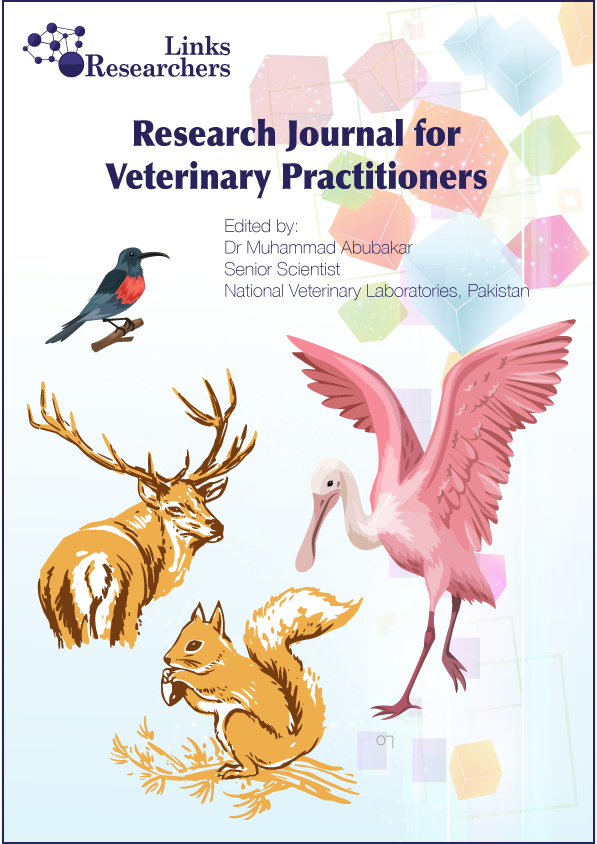Halide Nihal Açikgöz1*, Serdal Kenan Köse2 and Ali Açikgöz3
Ambreena Hafiz1, Tanzeela Riaz2 and Farah Rauf Shakoori1*
Ali Murad Rahoo1,2, Tariq Mukhtar3,*, Simon R. Gowen1, Rehana Kanwal Rahoo4 and Shaukat Ibrahim Abro5
Marryam Bakhtawar1, Qamar Saeed1* and Naeem Iqbal2
Muhammad Raheel1,*, Nazir Javed2, Sajid Aleem Khan2, Hafiz Muhammad Aatif3 and Sohail Ahmed4
Neerja Agrawal, Mukesh Srivastava, Akhilesh Tripathi and Amrendra Singh
Nilesh Suresh Gole and Bijan Kumar Das
S. Patra, V.W. Dhote, SK F. Alam, B.C. Das, M.L. Chatterjee and A. Samanta
Manidipa Chowdhury
&nbs...
Imran Ali Rajput1*, Tajwer Sultana Syed1, Ghulam Hussain Abro1, Imran Khatri1 and Abdul Mubeen Lodhi2
Bashir Ahmad1*, Ahmad-Ur-Rahman Saljoqi1, Hayad Zada2, Shahid Sattar1, Toheed Iqbal3, Saddam Hussain1 and Muhammad Saeed4
Mohammad Siddique Munawar, Shazia Raja, Elizabeth Stephen Waghchoure* and Muhammad Barkat**
Habib Iqbal Javed, Ashiq Saleem, Javed Fateh, Mozammil Hussain, Naheed Akhtar and Shamim-ul-Sibtain Shah*
Maria Rauf*, Ehsan-ul-Haq**, Javed Khan**, Abdul Rehman***, Waseem Ahmad Gillani* and Asrar Ali**
Muhammad Tayyab Mudassar*, Ehsan-ul-Haq*, Muhammad Naeemullah**, Muhammad Shakeel*, Muhammad Ashfaque*, Asmat un Nisa* and Javed Khan*
Javed Khan*, Ehsan-ul-Haq*, Habib Iqbal Javed*, Tariq Mahmood*,
Awais Rasool*, Naheed Akhtar and Saleem Abid**
Riaz Hussain*, Muhammad Riaz**, Mushtaq A. Saleem*** and Muhammad Ishaque Mastoi**
Tanzeela Riaz*†, Farah Rauf Shakoori, Syed Shahid Ali















